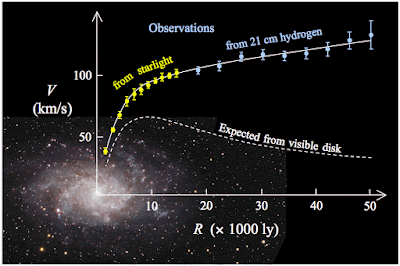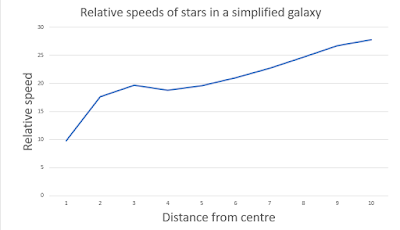Interesting article from Forbes ("Rotating Galaxies Could Prove Dark Matter Wrong") which includes the following graphic:

You can't argue with facts. The observed speeds are the observed speeds. The big mistake appears to be the other line for "Expected from visible disk".
What I don't get is why anybody would expect that in the first place. While the centres of galaxies are a lot denser than the outer bits, overall the matter is pretty evenly spread out (let's assume that the concentration of non-light emitting clouds of gas and dust are distributed in the same way as the visible stars).
Remember that a star at the outer edge of a galaxy only feels the pull of gravity inwards, but for a star further in, some of the inwards pull is cancelled out by the outwards pull of the stars further out.
Similarly, gravity from mass 'ahead' of the star, pulling it forwards is also cancelled out by gravity from mass 'behind' the star pulling it backwards. It is only the net inwards pull that matters.
In our Solar System, the Sun is 99.9% of the mass and thus causes 99.9% of the gravity and explains 99.9% of the orbits and speeds of the planets, but at a local level, the mass of a planet dictates the orbits of its moons. Earth is tiny compared to the sun, but a lot closer to the Moon. If you are calculating the orbit of the Moon, you first consider its orbit round Earth and then adjust that a bit for the influence of the Sun.
In the same way, the outer stars are orbiting round/in between/past each other as much as round the center.
I did a spreadsheet for an idealised galaxy with
a) 11% of total matter in a circle with a radius of 2 "units" (multiples of 5,000 light years, let's say) from the center and
b) the rest evenly spread out,
and calculated the relative net inward pull of gravity on a star orbiting 1, 2, 3 etc "units" from the center.
The speed required to stay in a particular orbit is proportional to the force of gravity acting on it; there is no need to ponder whether a star's orbit dictates its speed; or whether its speed dictates its orbit; or a bit of both.
My spreadsheet produces a chart which shows that having made these assumptions, the relative force of gravity on a star traveling perpendicular to the center at various distances along the radius matches up pretty well with the observations (the vertical axis units are not any absolute value, it's just relative to each other):

